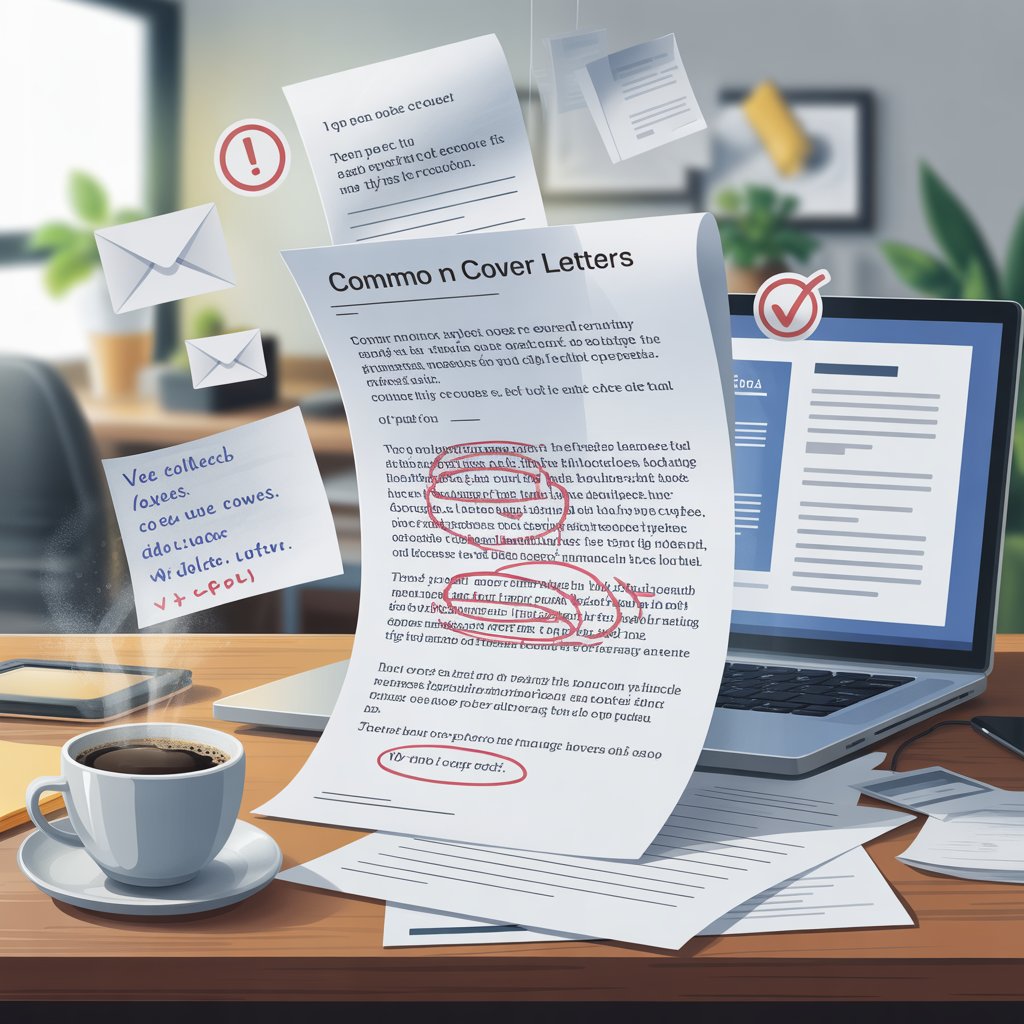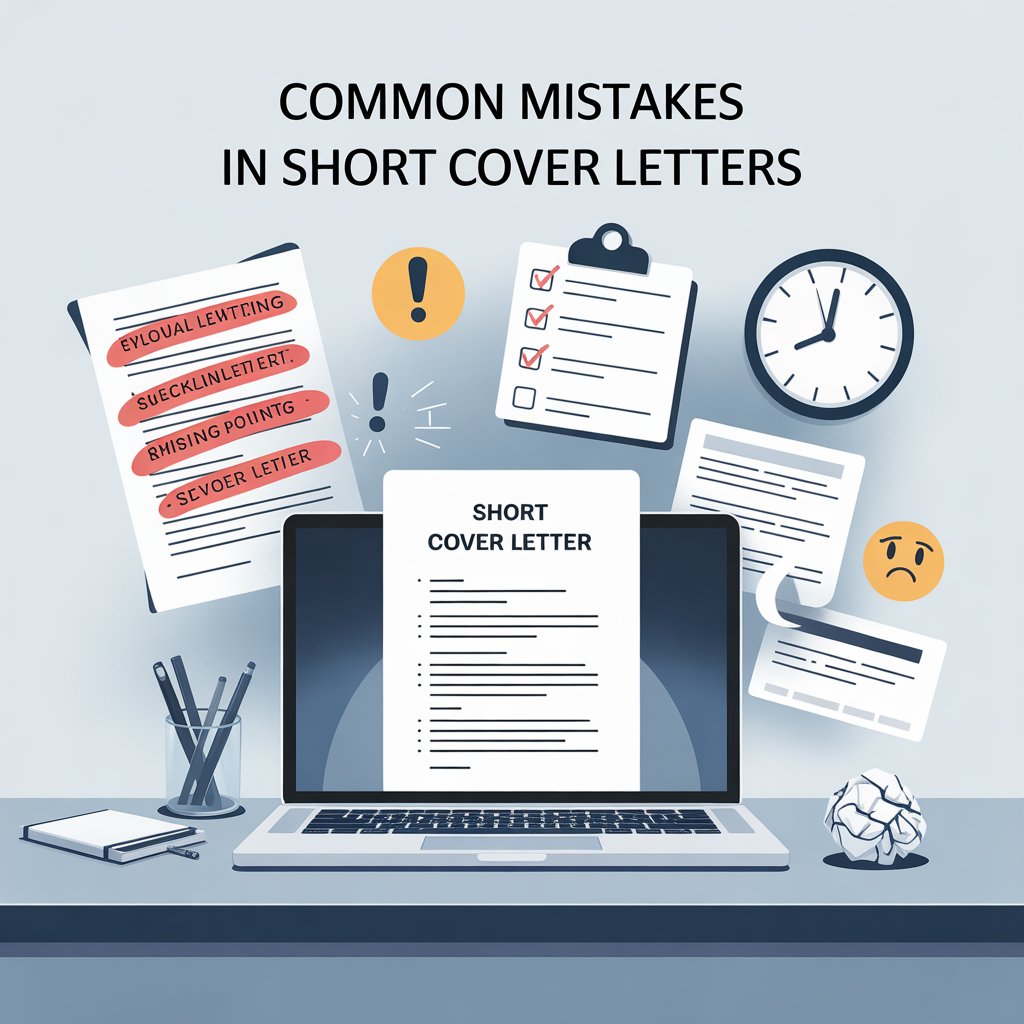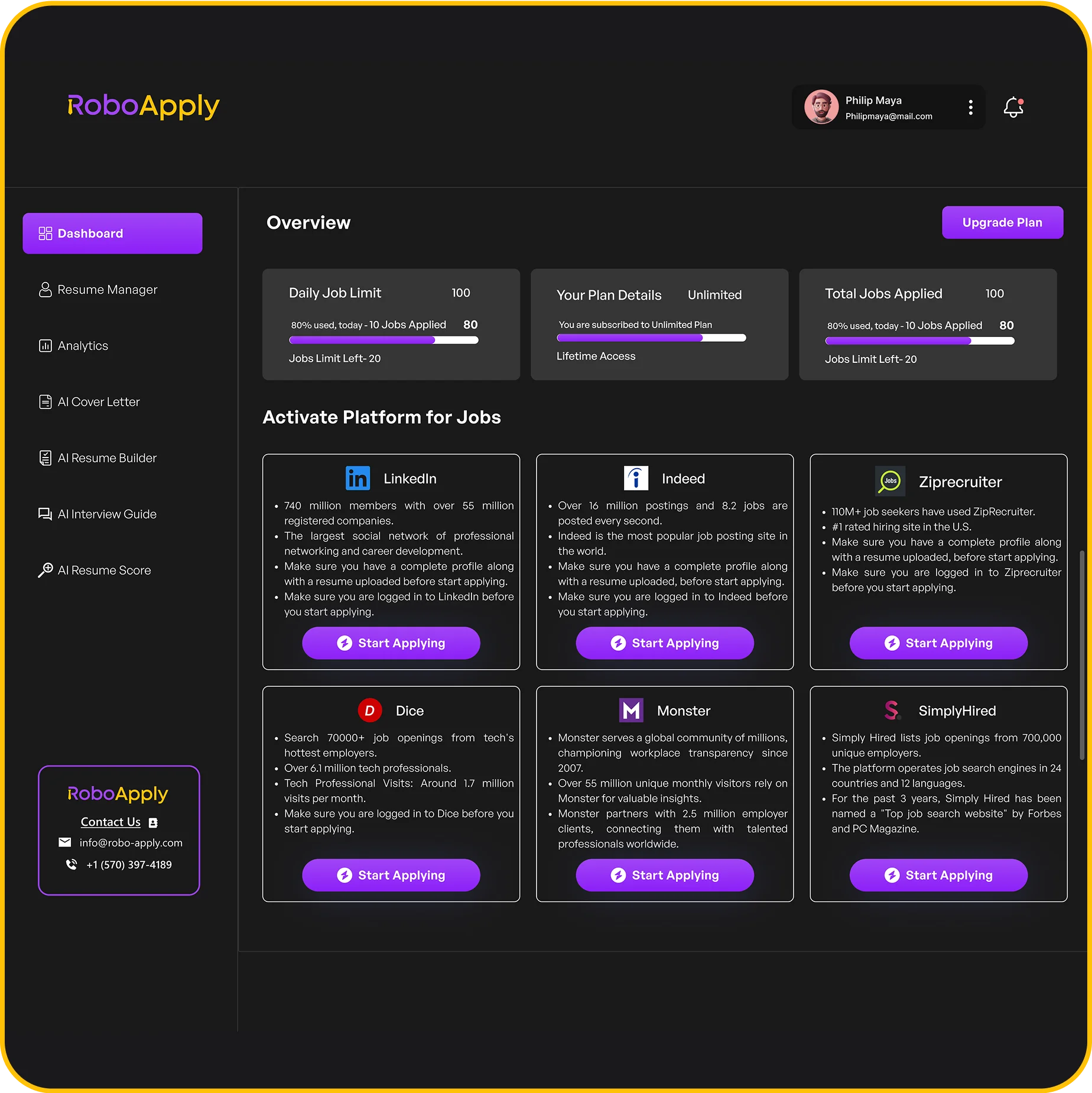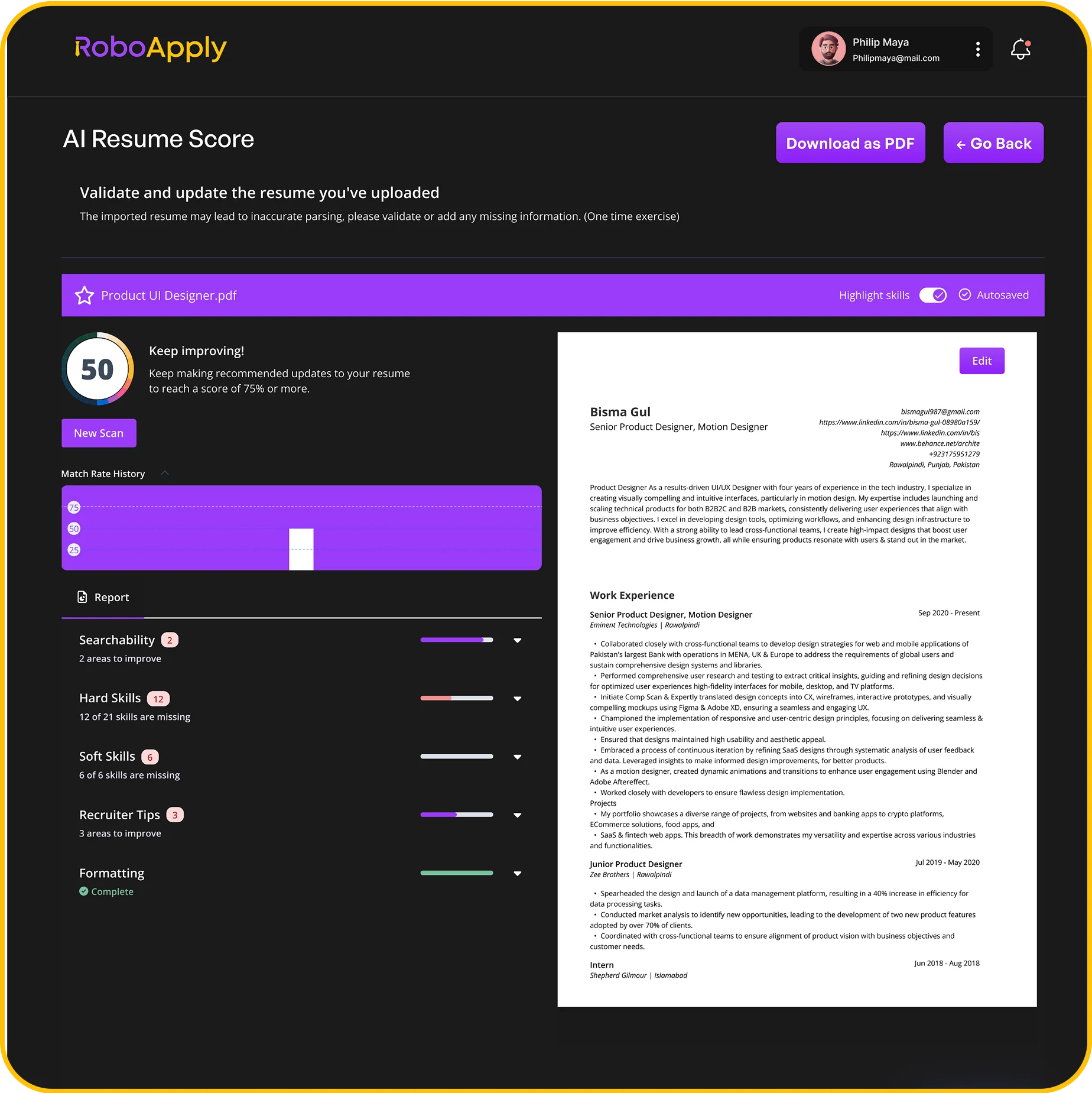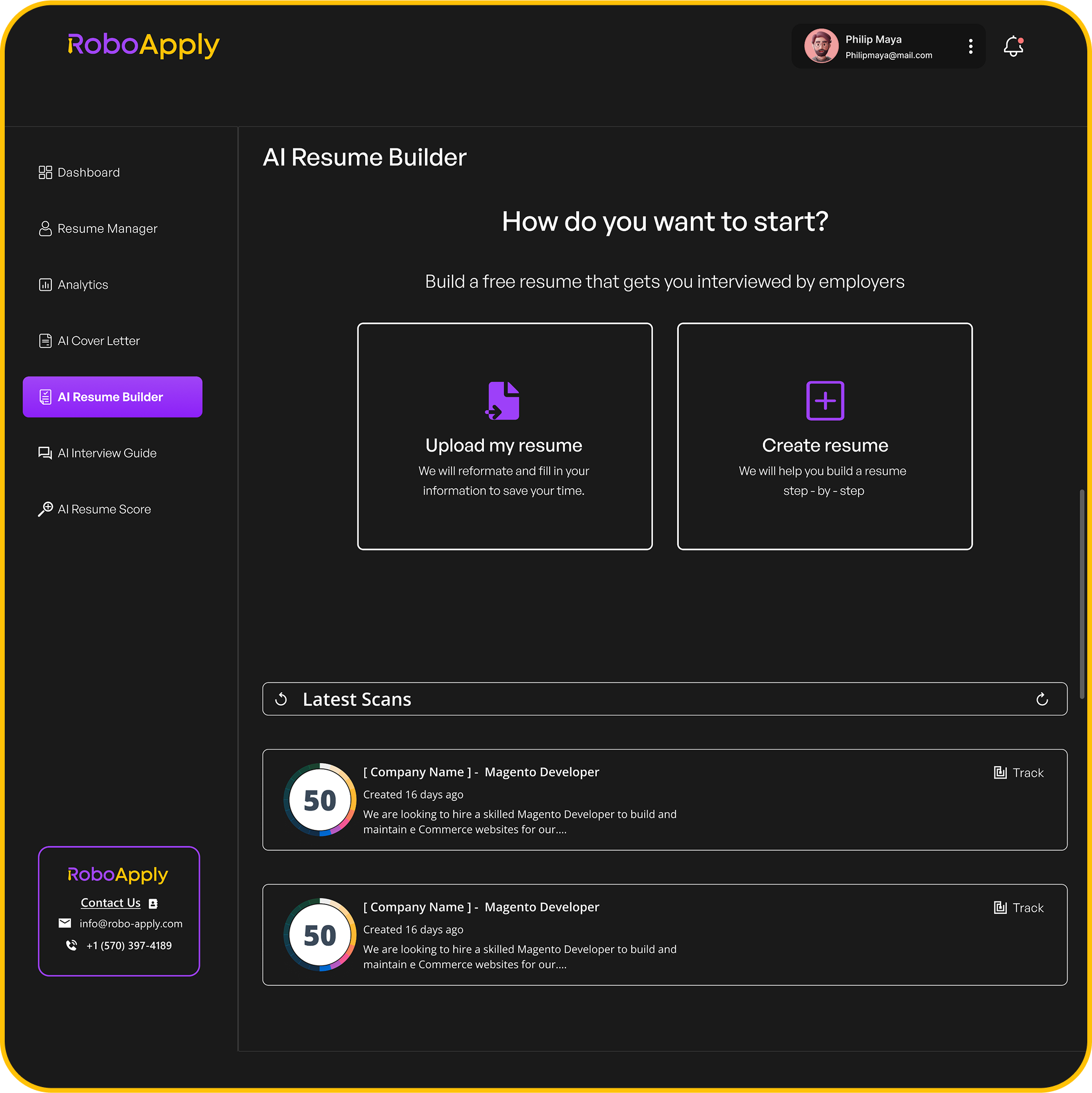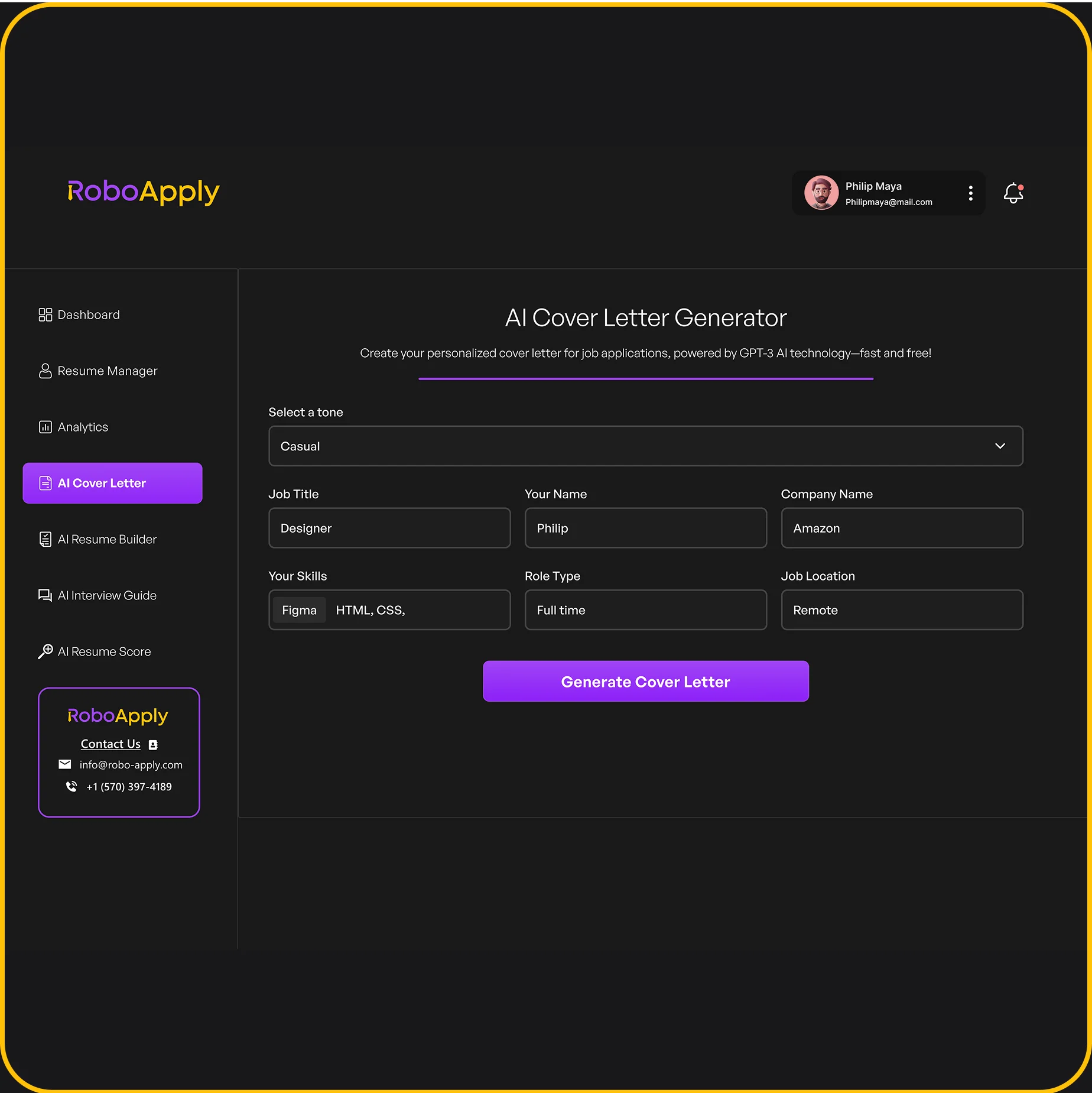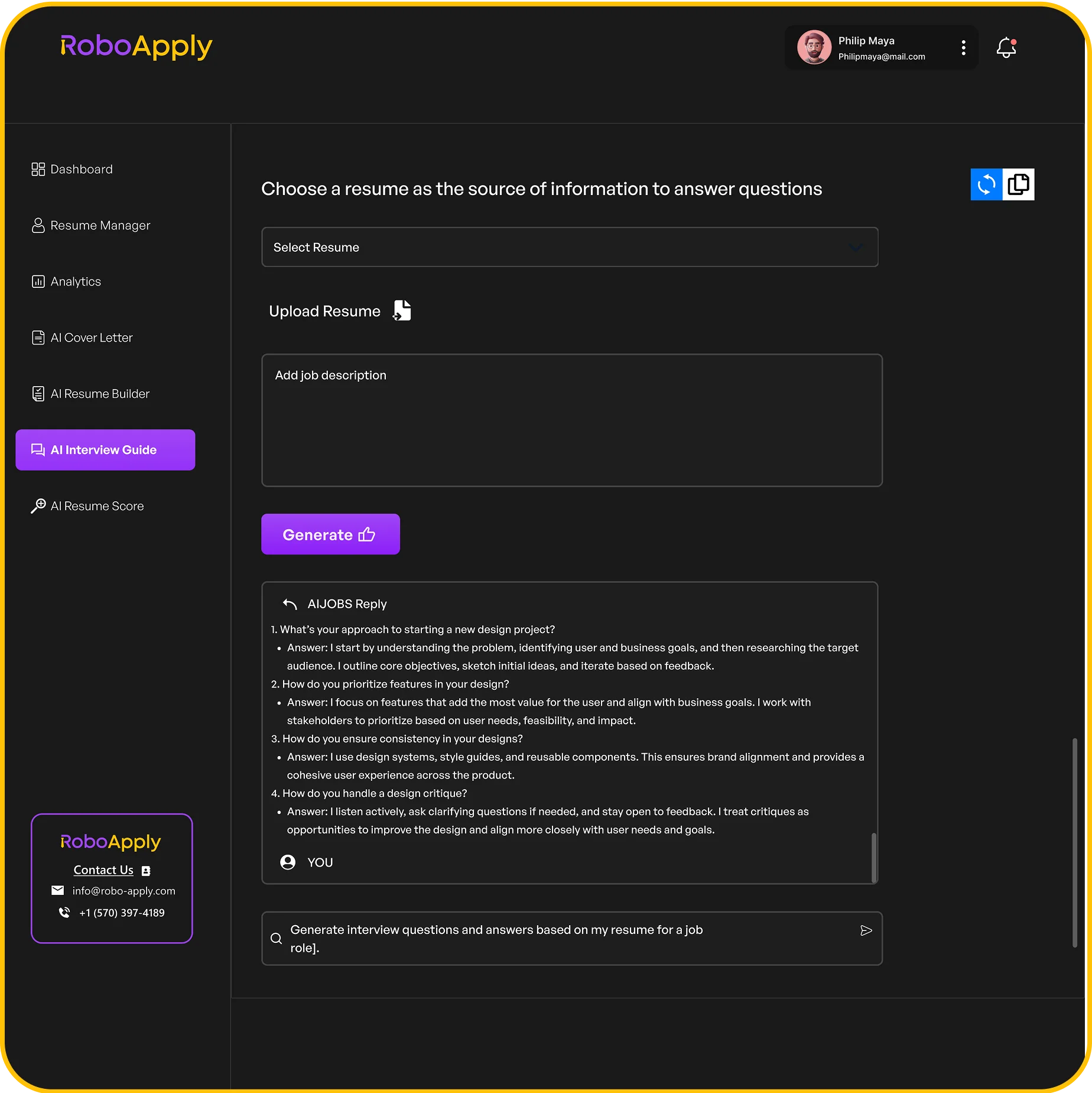When it comes to job applications, cover letters are a big deal. They show your personality and explain why you’re the right fit for the job. But how long should they be? You might wonder what the difference is between a short cover letter and a long one. This article breaks down the ins and outs of both types, helping you figure out when to use each one and how to structure them effectively.
Key Takeaways
- Short cover letters are concise and to the point, while long cover letters provide more detailed information.
- Choosing the right length depends on the industry and the specific job you’re applying for.
- Short cover letters are best for straightforward applications, while long ones suit more complex roles.
- Avoid common mistakes like being too vague in short letters or overly detailed in long ones.
- Tailor your cover letter length and content to match the job description and company culture.
Understanding Cover Letter Length
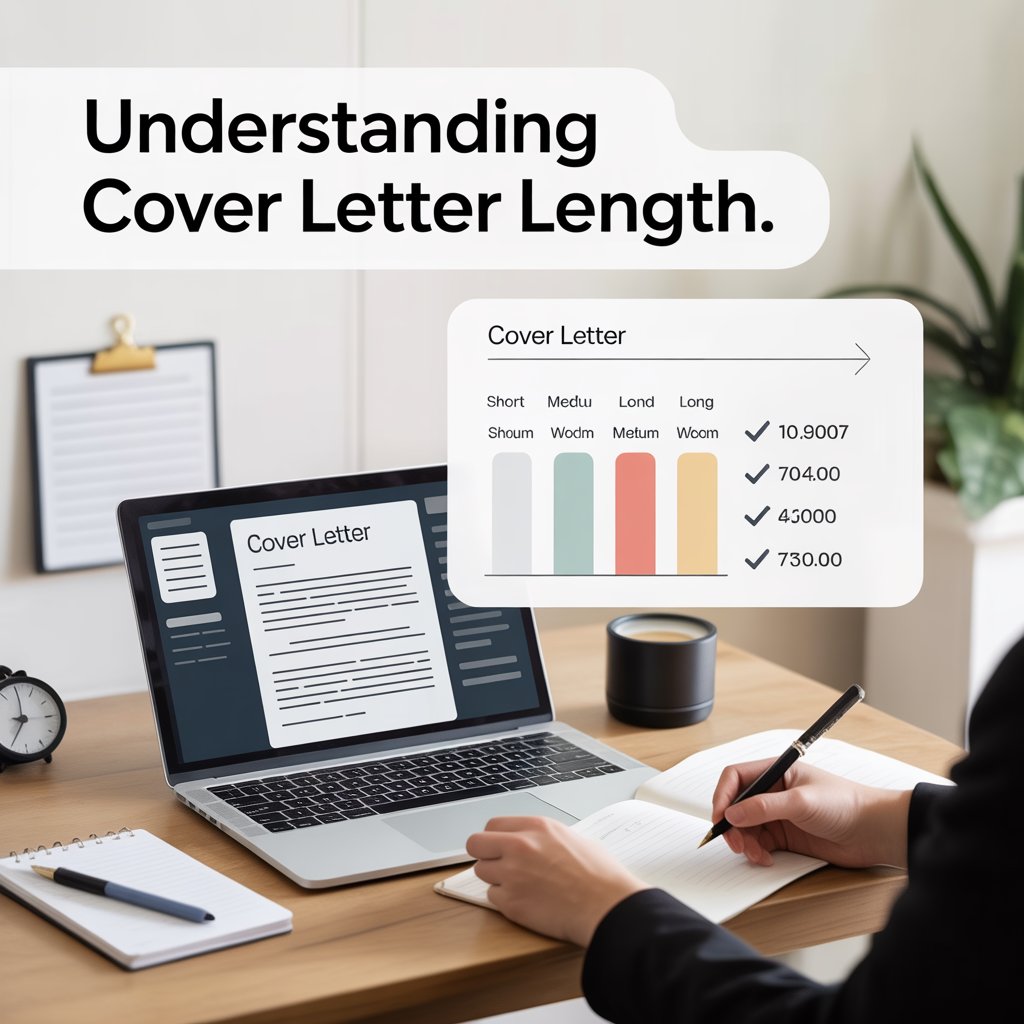
Defining Short Cover Letters
Okay, so what exactly is a short cover letter? Think of it as the elevator pitch of your professional self. It’s concise, usually under half a page, and gets straight to the point. It’s about making a quick, strong impression without overwhelming the reader. You want to highlight your most relevant skills and experience without diving into every single detail. Brevity is key here. It’s like saying, “Here’s why I’m perfect, in a nutshell.” For example, if you’re applying for a marketing role, a short cover letter might quickly mention your experience with social media campaigns and content creation, linking them directly to the job requirements.
Defining Long Cover Letters
Now, let’s talk about the other end of the spectrum: the long cover letter. This isn’t just a slightly longer version of the short one; it’s a different beast altogether. A long cover letter typically spans a full page, sometimes even a bit more if absolutely necessary. It allows you to go into more detail about your experiences, skills, and how they align with the specific needs of the company. It’s your chance to tell a story, to show your personality, and to really connect with the hiring manager on a deeper level. Think of it as a detailed explanation of why you’re not just qualified, but the ideal candidate. It’s like saying, “Let me walk you through my journey and show you exactly why I’m the best fit.”
Importance of Length in Applications
The length of your cover letter matters more than you might think. It’s not just about filling space; it’s about respecting the reader’s time and tailoring your message to the specific job and industry. A too-short letter might come across as lazy or uninterested, while a too-long letter could bore the reader and make you seem unfocused. The goal is to strike the right balance. Consider the industry standards, the company culture, and the specific requirements of the job. For instance, a tech startup might appreciate a concise, to-the-point letter, while a more traditional firm might expect a more detailed and formal approach. Remember, the cover letter is your chance to make a first impression, so make it count. Aim for around three paragraphs to keep it concise and engaging.
Choosing the right length is about understanding the context. It’s about knowing your audience and tailoring your message to resonate with them. It’s about showing that you’ve done your research and that you’re genuinely interested in the opportunity.
Here’s a quick guide:
- Short Cover Letter: Ideal for fast-paced industries or when applying to many jobs.
- Long Cover Letter: Best for roles requiring detailed explanations or when you have significant experience to showcase.
- Always Tailor: Adjust the length based on the specific job description and company culture.
Key Differences Between Short and Long Cover Letters
Conciseness vs. Detail
Short cover letters get straight to the point. They highlight only the most relevant skills and experiences. Think of it as an elevator pitch – quick and impactful. Long cover letters, on the other hand, allow for a more detailed explanation of your background. They provide room to elaborate on projects, responsibilities, and how they align with the job requirements. It’s like telling a story, with a beginning, middle, and end. The choice depends on what you need to convey. If you need help with job application materials, there are many resources available.
Impact on Reader Engagement
A short cover letter can grab a recruiter’s attention quickly. Its brevity can be a strength, especially when hiring managers are swamped with applications. However, it might not leave a lasting impression if it lacks depth. A longer cover letter has the potential to create a stronger connection with the reader by showcasing your personality and providing a more complete picture of your qualifications. But, it also risks losing the reader’s interest if it becomes too verbose or repetitive. It’s a balancing act between keeping them hooked and providing enough information. Remember, a good cover letter should be around three paragraphs.
Suitability for Different Industries
Some industries value brevity and directness. For example, tech startups or fast-paced environments might prefer short cover letters that quickly demonstrate your key skills. Other industries, such as academia or research, often appreciate a more detailed and comprehensive approach. These fields may require you to showcase your in-depth knowledge and experience through a longer cover letter. Consider the industry’s culture and expectations when deciding on the length of your cover letter. Tailoring your approach can significantly increase your chances of success. It’s all about understanding what the employer is looking for and adapting accordingly.
When to Use a Short Cover Letter
Ideal Situations for Brevity
Sometimes, less really is more. A short cover letter shines when you need to be direct and to the point. Think about situations where the job posting explicitly asks for a brief introduction, or when you’re applying through an online system with strict character limits. Also, if you’re making a career change and your relevant experience is limited, a shorter letter can help you focus on transferable skills and enthusiasm without dwelling on what you lack. It’s also a good choice when applying to roles in fast-paced industries where recruiters are swamped with applications and appreciate concise communication.
Examples of Short Cover Letters
What does a short cover letter look like in practice? Imagine you’re applying for an entry-level marketing assistant position. You might start with a sentence highlighting your passion for marketing and then quickly transition into two or three key skills you’ve developed through internships or coursework. Another example is when you’re responding to a job fair posting. You can mention the specific conversation you had with the recruiter and then briefly explain how your skills align with the company’s needs. The goal is to make a memorable impression without overwhelming the reader with information. Here’s a quick example:
“Dear [Hiring Manager Name],
I am writing to express my interest in the Marketing Assistant position at [Company Name], as advertised on [Platform]. My experience in social media management and content creation, gained through my internship at [Previous Company], aligns well with the requirements outlined in the job description. I am eager to contribute my skills to your team and learn from experienced professionals. Thank you for your time and consideration.”
Benefits of a Concise Approach
There are several advantages to keeping your cover letter short and sweet. First, it shows that you respect the reader’s time and can communicate effectively. Recruiters often have to sift through hundreds of applications, so a concise letter is more likely to be read in its entirety. Second, it forces you to prioritize the most important information, ensuring that your key qualifications stand out. Finally, a short cover letter can be easier to tailor to each job, as you’re only focusing on the most relevant aspects of your background. Here are some benefits:
- Increased readability
- Improved focus on key qualifications
- Easier customization for each application
When to Use a Long Cover Letter
Ideal Situations for Length
Longer cover letters shine when you need to provide extensive detail about your qualifications. This is especially true when applying for roles that require a high degree of specialization or when your experience isn’t directly aligned with the job description. A longer format allows you to connect the dots for the hiring manager. Think about scenarios like:
- Career changes where you need to explain how your past experiences translate to the new role.
- Applying for senior-level positions that demand a comprehensive overview of your leadership and strategic capabilities.
- Situations where the job description is broad, and you want to showcase a wide range of skills and experiences.
A longer cover letter gives you the space to tell a story, demonstrating not just what you’ve done, but also how you’ve done it and the impact you’ve made. This can be particularly effective when quantifiable results aren’t easily available.
Examples of Long Cover Letters
Consider a candidate applying for a Chief Technology Officer (CTO) position. A short cover letter wouldn’t suffice. A longer letter would allow them to detail their experience in leading tech teams, managing budgets, and implementing innovative solutions. Another example is someone applying for a research-heavy role, where they need to elaborate on past projects, methodologies, and findings. A well-formatted draft is essential.
Benefits of Detailed Explanations
The primary benefit of a longer cover letter is the opportunity to provide context and depth. It allows you to:
- Showcase your understanding of the company’s challenges and opportunities.
- Demonstrate how your skills and experiences directly address those needs.
- Provide specific examples of your accomplishments and their impact.
- Address any potential concerns or questions the hiring manager might have.
By going into greater detail, you can create a more compelling and persuasive case for why you are the right candidate. Just be sure to keep it engaging and avoid unnecessary repetition. Remember, the goal is to inform and impress, not to bore the reader. A longer cover letter is a chance to express your motivation and personality beyond a résumé.
Structure of a Short Cover Letter
Essential Components
Okay, so you’re aiming for a short cover letter. What absolutely has to be in there? Think of it like this: you’ve got limited space, so every sentence needs to pull its weight. You need a greeting, an intro that grabs attention, a body that highlights your key skills, and a strong closing. Don’t forget your contact info! It’s like packing for a weekend trip – only the essentials make the cut. A cover letter typically consists of three paragraphs, detailing the applicant’s motivation for applying to a specific position and providing a brief summary of their professional background.
- Your Contact Information
- A Professional Greeting
- A Concise Closing
Effective Opening Statements
First impressions matter, right? Especially when you’re trying to be brief. Your opening statement is your chance to hook the reader. Ditch the generic phrases like “I am writing to express my interest…” Instead, try something like “Your opening statement is your chance to hook the reader.” Start with a punchy sentence that shows you understand the company and the role. Mention a specific achievement or something that genuinely excites you about the opportunity. Make them want to keep reading!
Closing with Impact
Don’t let your cover letter fizzle out at the end. Your closing should be confident and leave a lasting impression. Reiterate your interest in the position and thank the reader for their time. Include a call to action, such as expressing your eagerness to discuss your qualifications further in an interview. Keep it short, sweet, and professional. Find five concise cover letter samples, a template, and helpful writing tips to create an effective short cover letter for your job applications.
A strong closing can make all the difference. It’s your final opportunity to reinforce your value and leave the hiring manager with a positive impression. Make it count!
Structure of a Long Cover Letter
Detailed Introduction
In a longer cover letter, the introduction needs to do more than just state your interest. It’s your chance to make a strong first impression. You should clearly articulate the position you’re applying for and how you learned about the opportunity. Briefly touch on why this specific role and company appeal to you, setting the stage for a more in-depth explanation later. Think of it as a teaser, hinting at the value you bring and why you’re a great fit.
In-Depth Body Paragraphs
The body paragraphs are where a long cover letter really shines. Instead of just summarizing your resume, use this space to provide context and tell stories. Elaborate on your experiences, highlighting specific projects and accomplishments that directly relate to the job requirements. Don’t be afraid to address any potential concerns or gaps in your resume, offering explanations and demonstrating how you’ve overcome challenges. Quantifiable results and metrics are your friends here – use them to showcase the impact you’ve made in previous roles. For example, if you increased sales by 20% in your last position, make sure to mention it with details. This is where you show relevant experience.
Comprehensive Conclusion
The conclusion of a long cover letter is more than just a polite thank you. It’s your final opportunity to reinforce your key qualifications and reiterate your enthusiasm for the role. Summarize the main benefits of hiring you, emphasizing how your skills and attributes align with the company culture. Include a clear call to action, suggesting a follow-up step, such as scheduling an interview. End on a confident and professional note, leaving the hiring manager with a lasting impression of your capabilities and eagerness to contribute. A well-crafted conclusion can significantly impact whether employers prioritize resumes or cover letters.
A longer cover letter allows you to showcase your personality and passion for the role in a way that a shorter letter simply can’t. It’s an opportunity to connect with the hiring manager on a deeper level and demonstrate your understanding of the company’s needs and goals.
Here’s a simple structure to follow:
- Introduction: State your interest and briefly explain why you’re a good fit.
- Body Paragraphs: Elaborate on your experiences and accomplishments, providing context and quantifiable results.
- Conclusion: Reiterate your key qualifications, express your enthusiasm, and include a call to action.
Common Mistakes in Short Cover Letters
Overly Vague Statements
One of the biggest traps in writing a short cover letter is using language that’s too general. Avoid making statements that could apply to any job or company. Instead, even in a brief format, try to include specific examples or skills that directly relate to the position you’re applying for. Vague statements make it seem like you haven’t put in the effort to understand the role or the company. For example, instead of saying “I have strong communication skills,” try “My experience leading cross-functional teams at my previous role has honed my communication skills, resulting in a 15% increase in project efficiency.”
Lack of Personalization
In today’s job market, a generic cover letter is almost as bad as no cover letter at all. Recruiters can spot a template from a mile away. Personalization shows that you’ve taken the time to research the company and understand their needs. A lack of personalization can be a major turnoff. Make sure to address the hiring manager by name if possible, and reference specific projects or initiatives that the company is working on. This demonstrates genuine interest and initiative. It’s important to avoid common mistakes to make your application stand out.
Ignoring Job Requirements
Even in a short cover letter, you must address the key requirements listed in the job description. Failing to do so suggests that you either didn’t read the description carefully or that you don’t possess the necessary qualifications.
Here’s a simple checklist to ensure you cover the essentials:
- Carefully review the job description.
- Identify the top 3-5 key requirements.
- Explicitly address each requirement in your cover letter, providing specific examples of how you meet them.
A short cover letter should be laser-focused on demonstrating how your skills and experience align with the specific needs of the employer. It’s not about summarizing your entire resume, but rather highlighting the most relevant qualifications.
It’s also important to follow instructions carefully when submitting your application. This shows attention to detail and respect for the hiring process.
Common Mistakes in Long Cover Letters
Excessive Detail
One of the biggest traps with longer cover letters is including too much information. It’s easy to fall into the trap of thinking that more is better, but hiring managers are busy people. They don’t want to read your life story; they want to know why you’re a good fit for this specific job. Stick to the most relevant details and cut anything that doesn’t directly support your application. Think of it as quality over quantity.
Repetition of Resume Content
Another common mistake is simply restating what’s already in your resume. The cover letter should complement your resume, not duplicate it. Use the cover letter to provide context, explain your motivations, and highlight achievements in a way that a resume can’t. If you’re just copying and pasting bullet points, you’re wasting valuable space and the reader’s time. Instead, expand on a key accomplishment and show how it relates to the job requirements. Think of your resume content as the outline, and your cover letter as the detailed explanation.
Failure to Engage the Reader
Long cover letters can easily become monotonous and lose the reader’s attention. It’s important to keep the tone engaging and avoid sounding like a robot. Use storytelling techniques, inject some personality, and show your enthusiasm for the role and the company. A wall of text is a surefire way to bore the hiring manager. Make sure your effective openings grab their attention from the start and keep them interested until the end.
A good rule of thumb is to ask yourself, “Would I want to read this?” If the answer is no, then it’s time to revise. Keep it concise, keep it relevant, and keep it engaging.
Best Practices for Short Cover Letters
Focus on Key Achievements
When space is limited, you need to make every word count. Highlighting your most significant accomplishments is key. Instead of listing every task you’ve ever done, concentrate on 2-3 achievements that directly relate to the job requirements. Use quantifiable results whenever possible to show the impact you made in previous roles. For example, instead of saying “Improved customer satisfaction,” say “Increased customer satisfaction scores by 15% in six months.”
Tailor to the Job Description
It’s tempting to use a generic cover letter for multiple applications, but that’s a mistake, especially with short cover letters. Carefully read the job description and identify the key skills and qualifications the employer is seeking. Then, tailor your cover letter to address those specific points. Show how your experience aligns with their needs and explain why you’re a good fit for the company. This targeted approach demonstrates that you’ve done your research and are genuinely interested in the position. Make sure to include the job title in your letter.
Use Clear and Direct Language
Brevity demands clarity. Avoid jargon, clichés, and overly complex sentences. Use strong action verbs and get straight to the point. Your goal is to communicate your qualifications and enthusiasm in a concise and easy-to-understand manner. Imagine you’re explaining your skills to someone with limited time – what would you say? Keep your sentences short and focused, and use bullet points or numbered lists to break up large blocks of text. Proofread carefully to eliminate any errors in grammar or spelling. Remember to proofread thoroughly before submitting.
A short cover letter is not an excuse for being lazy. It requires more effort to distill your qualifications into a concise and compelling message. Think of it as an elevator pitch – you have a limited time to make a strong impression.
Best Practices for Long Cover Letters
Incorporate Storytelling
Don’t just list your accomplishments; weave them into a narrative. Think about a time you faced a challenge and how you overcame it. A long cover letter gives you the space to show, not just tell, your potential employer what you’re capable of. It’s about making a connection and showing your personality. For example, instead of saying “I improved team efficiency,” you could describe a specific project where you identified bottlenecks and implemented solutions, leading to a measurable increase in productivity. This approach makes your letter more engaging and memorable. Think of it as a cover letter example that brings your resume to life.
Highlight Relevant Experiences
With a longer cover letter, you have the opportunity to go into detail about experiences that directly relate to the job description. Don’t just repeat what’s on your resume; expand on it. Explain the context of your roles, the skills you developed, and the impact you made. If the job requires project management skills, describe a project you led, the challenges you faced, and the results you achieved. This demonstrates that you not only have the skills but also understand how to apply them in a real-world setting.
Maintain Professional Tone
While storytelling is important, it’s crucial to maintain a professional tone throughout your long cover letter. Avoid overly casual language, slang, or humor that could be misinterpreted. Remember, this is a formal business document, and your goal is to present yourself as a serious and capable candidate. Proofread carefully for any grammatical errors or typos, and ensure that your writing is clear, concise, and easy to understand. A professional tone shows respect for the reader and demonstrates your attention to detail.
A long cover letter is your chance to make a strong impression by showcasing your personality and skills in detail. However, it’s important to strike a balance between providing enough information and overwhelming the reader. Keep your writing focused, relevant, and professional to maximize your chances of landing an interview.
Formatting Considerations for Short Cover Letters
Simple Layout
When crafting a short cover letter, simplicity is key. Avoid clutter and keep the layout clean and easy to read. A straightforward design ensures the hiring manager can quickly grasp the main points without getting lost in unnecessary details. Think of it as a snapshot of your qualifications – clear, concise, and impactful. Use white space effectively to separate paragraphs and create visual breathing room. This helps to guide the reader’s eye and makes the letter more inviting.
Font and Spacing Guidelines
Choosing the right font and spacing can significantly impact the readability of your short cover letter. Opt for a professional and easy-to-read font such as Arial, Calibri, or Times New Roman. A font size of 12 points is generally recommended. Single-space your text within paragraphs, and use a double space between paragraphs to create clear visual separation. This formatting ensures that your letter is both professional and accessible. Remember, the goal is to make it as easy as possible for the reader to understand your qualifications.
Email vs. Print Formatting
Formatting your short cover letter will differ depending on whether you’re sending it as an email or printing it out. For emails, you can keep the formatting simple, using the default font and size of your email program. However, for printed letters, pay closer attention to details such as margins (one-inch margins are standard), font choice, and spacing. If attaching a digital file, always use the file type requested by the company. If no preference is given, PDF is recommended as it preserves the document’s appearance on all devices. Name the file professionally, such as Firstname_Lastname_CoverLetter.pdf.
The key is consistency and clarity. Whether you’re sending an email or a printed letter, ensure that your formatting is professional and easy to read. This reflects well on your attention to detail and your overall professionalism.
Here’s a quick guide:
- Email: Use default font, clear subject line.
- Print: Use professional font, one-inch margins.
- Attachment: Save as PDF, name file professionally.
Formatting Considerations for Long Cover Letters
Structured Sections
When you’re dealing with a longer cover letter, it’s super important to break it up into clear, digestible sections. Think of it like writing a mini-essay. You need a solid introduction, a well-developed body, and a conclusion that ties everything together. This helps the person reading it to follow your train of thought and not get lost in a wall of text. Each section should have a specific purpose, whether it’s introducing yourself, detailing your experience, or explaining why you’re a great fit. This structure makes the letter more accessible and shows you can organize your thoughts effectively.
Use of Headings and Subheadings
To make your long cover letter even easier to read, consider using headings and subheadings. These act like signposts, guiding the reader through your qualifications and experiences. For example, you might have a heading like “Relevant Project Experience” with subheadings for each project you want to highlight. This not only breaks up the text visually but also allows the hiring manager to quickly find the information they’re most interested in. It’s all about making their job easier, which increases the chances they’ll actually read and remember your letter. Using headings and subheadings is a great way to show off your attention to detail.
Visual Appeal and Readability
Okay, so you’ve got the structure down, but what about how it looks? A long cover letter can easily become overwhelming if it’s just a solid block of text. Use white space strategically to give the reader’s eyes a break. Choose a professional font like Arial or Times New Roman, and stick to a readable font size (11 or 12 point is usually good). Margins should be at least one inch on all sides. Bullet points can also be your friend for listing achievements or skills. Basically, you want to make it as easy as possible for someone to read and understand your letter. Remember, first impressions matter, and a visually appealing cover letter shows you care about the details. Don’t forget that cover letters enhance applications and can make you stand out.
Think of your long cover letter as a sales pitch. You’re selling yourself, and the formatting is the packaging. If the packaging is messy and unappealing, people are less likely to open it up and see what’s inside. So, take the time to make your cover letter look professional and easy to read. It could make all the difference.
Here are some things to keep in mind:
- Use a consistent font throughout the document.
- Ensure adequate spacing between paragraphs.
- Proofread carefully for any errors.
When writing a long cover letter, it’s important to keep it neat and easy to read. Use clear headings and short paragraphs to break up the text. This makes it easier for the reader to find the information they need. Don’t forget to check your formatting before sending it out! For more tips on how to create a standout cover letter, visit our website today!
Wrapping It Up
In summary, understanding the difference between a normal and a brief cover letter can really help you make a good impression. A normal cover letter gives you space to share your story and qualifications in detail, while a brief one gets straight to the point, highlighting just the essentials. Depending on the job and the company culture, you might choose one over the other. Just remember, no matter which style you pick, keep it professional and tailored to the job. A well-crafted cover letter can set you apart from the competition and show that you’re serious about the opportunity.
Frequently Asked Questions
What is a cover letter?
A cover letter is a document you send with your resume when applying for a job. It explains why you are a good fit for the position and shows your interest in the job.
How long should my cover letter be?
A cover letter is usually about one page long, often made up of three main paragraphs.
What should I include in a short cover letter?
In a short cover letter, focus on your main achievements, why you want the job, and how your skills match what the company needs.
When is it best to use a long cover letter?
A long cover letter is good when you have a lot of relevant experience or want to explain your background in detail.
What are the common mistakes in a short cover letter?
Some mistakes include being too vague, not personalizing it for the job, or forgetting to mention key job requirements.
How do I format a cover letter?
Use a professional font, keep it single-spaced, and include your contact information at the top. Make sure it looks neat and organized.
What is the best way to start a cover letter?
Start with a strong introduction that states who you are, the job you are applying for, and why you are excited about it.
Should I repeat my resume in my cover letter?
No, your cover letter should not repeat your resume. Instead, it should highlight your most important experiences and skills.

